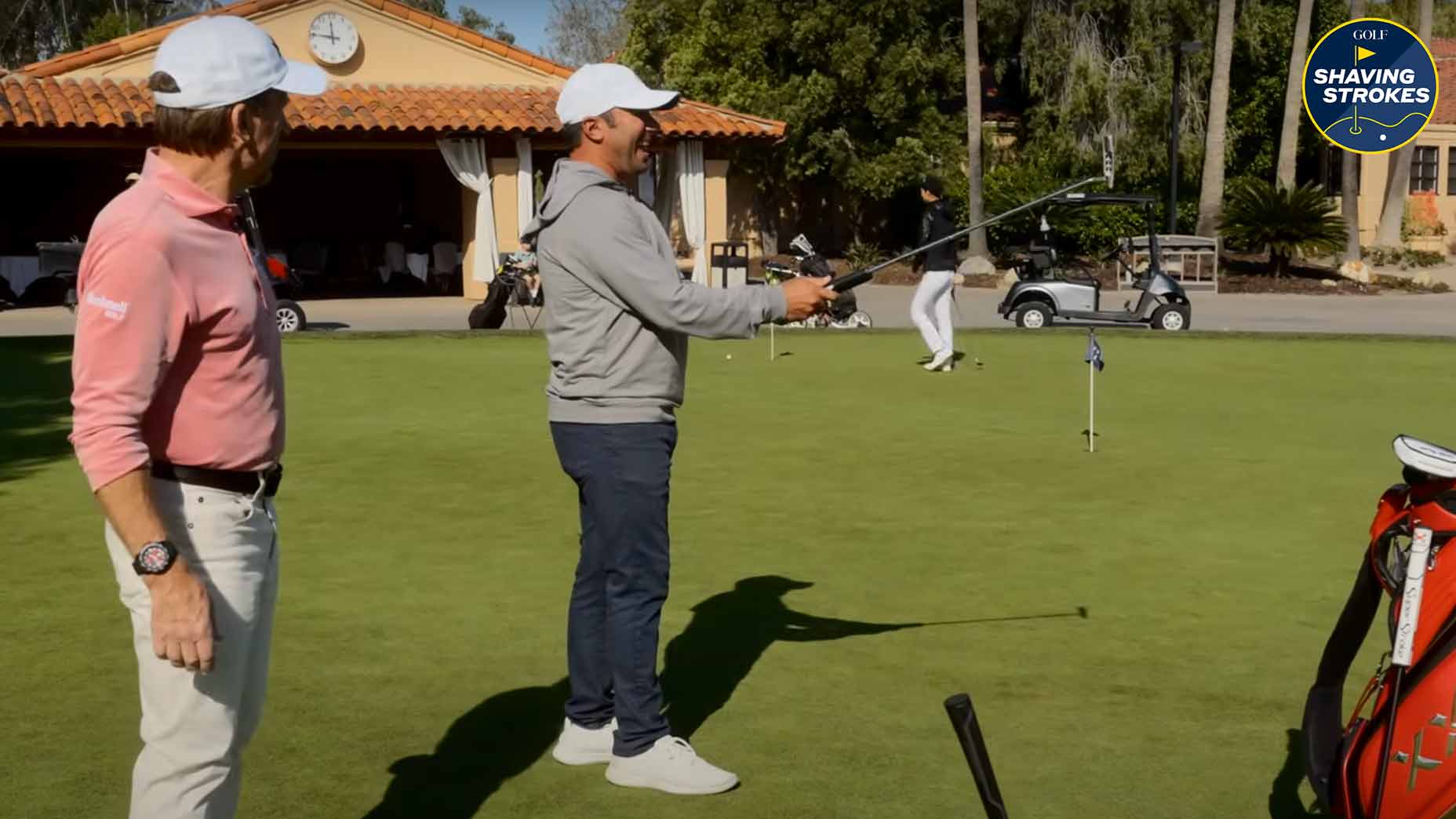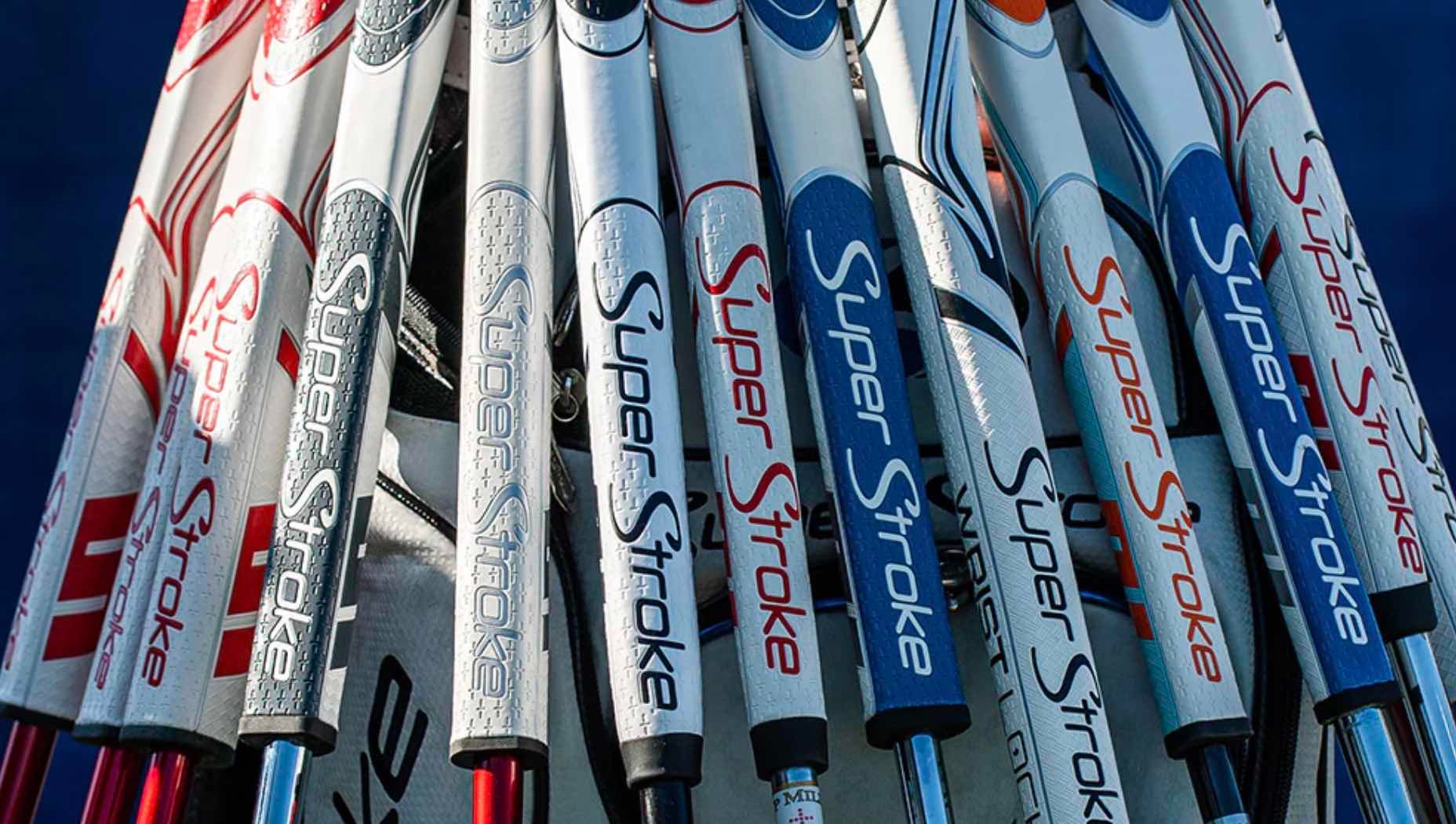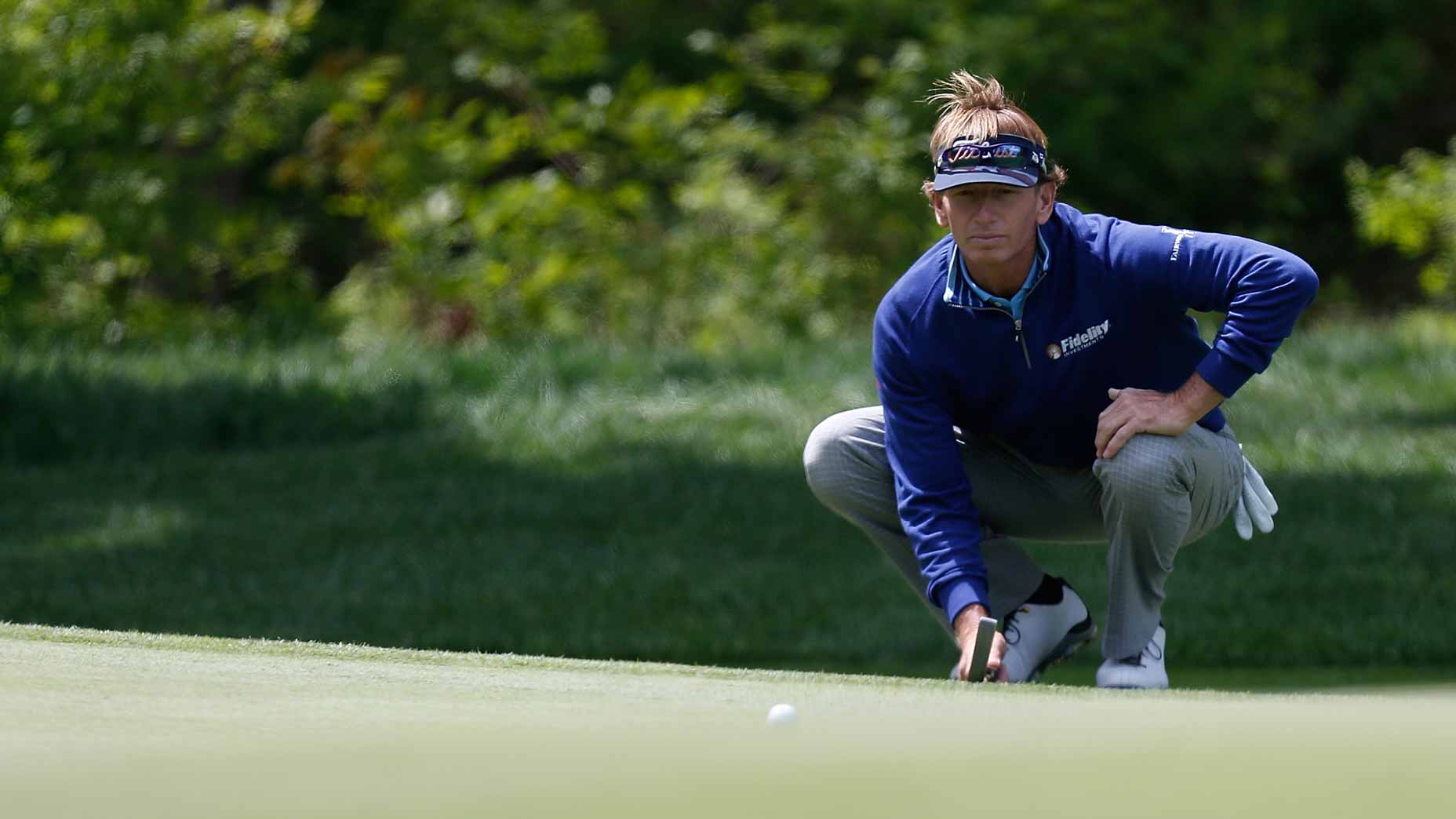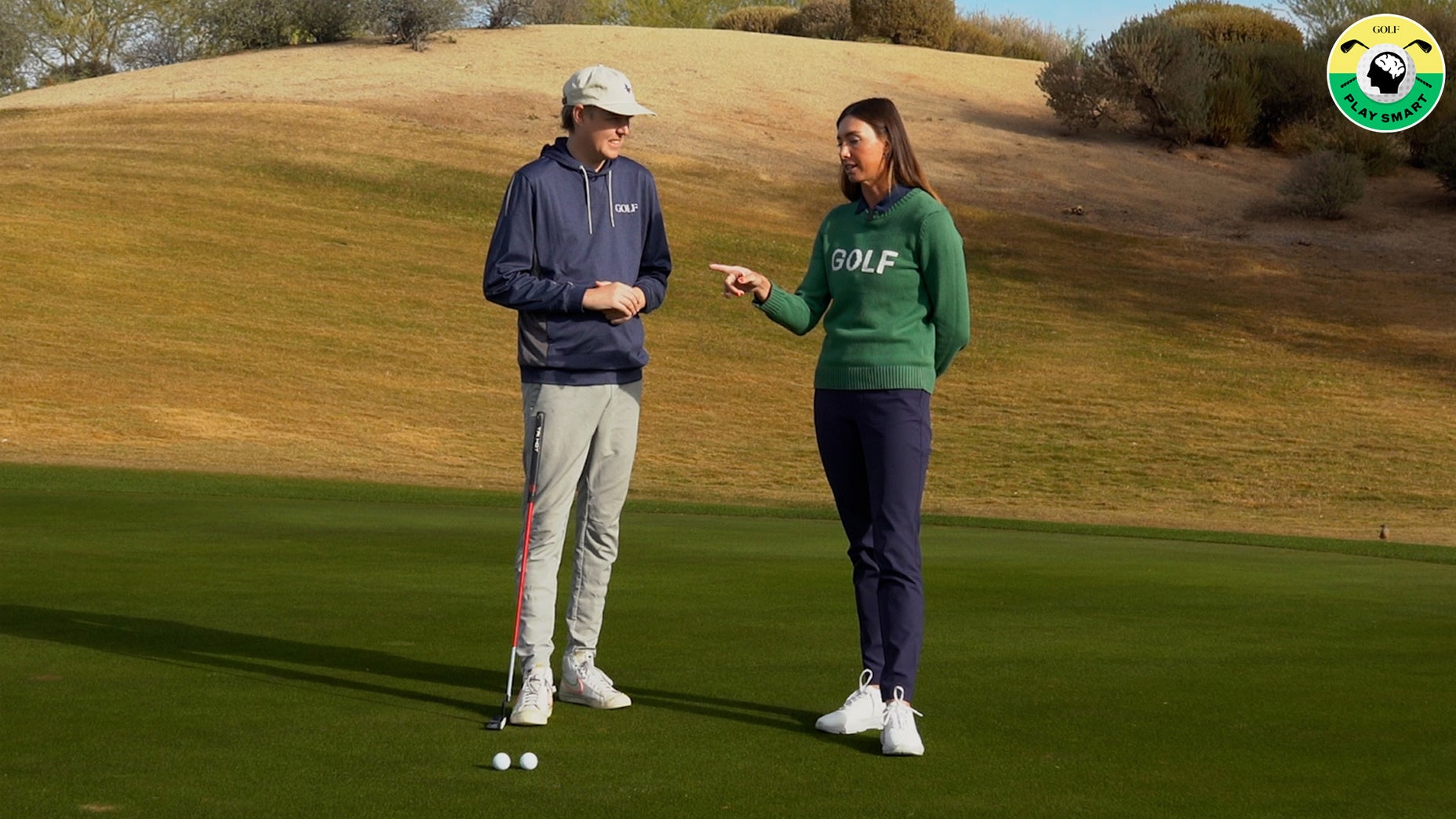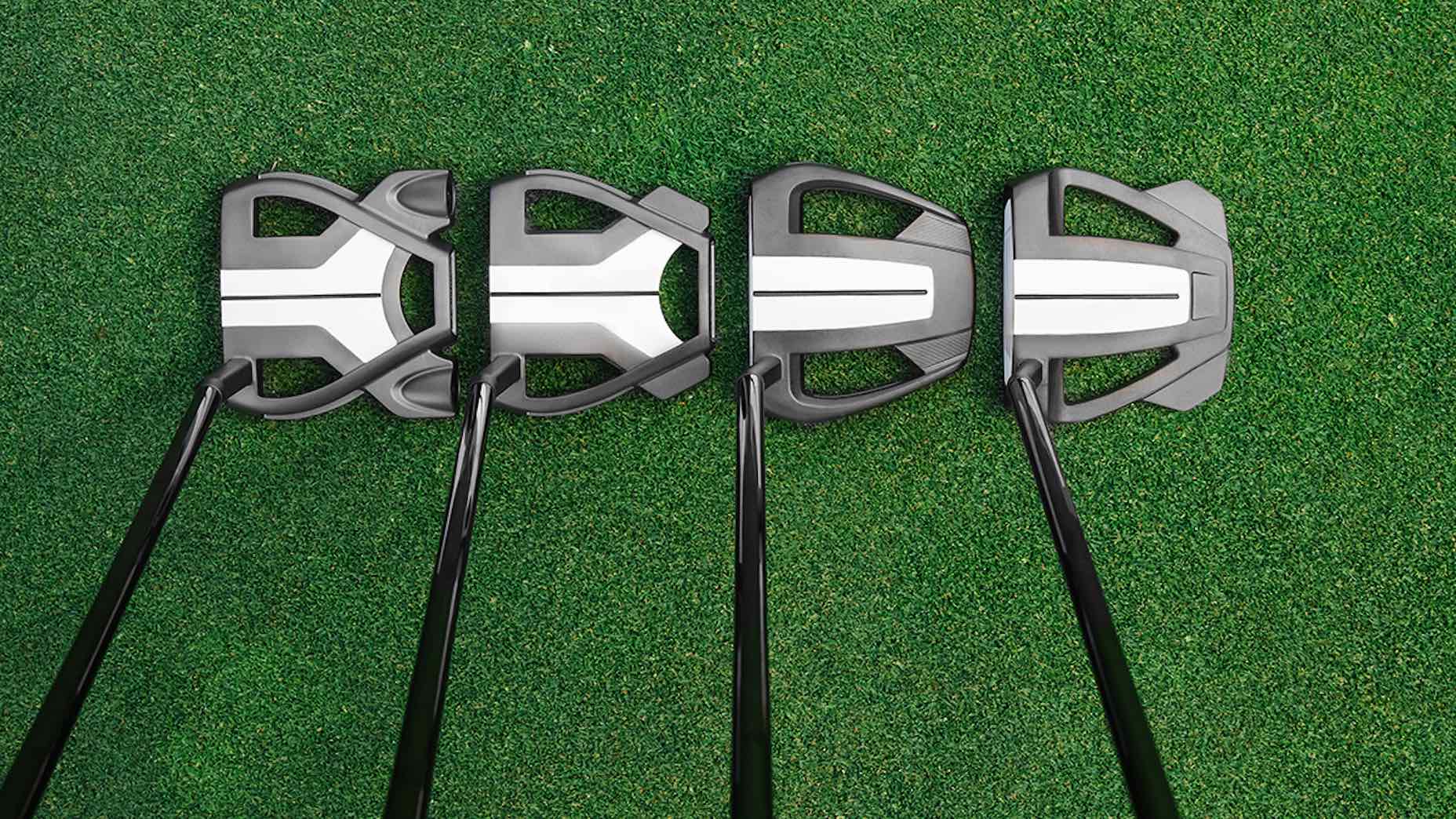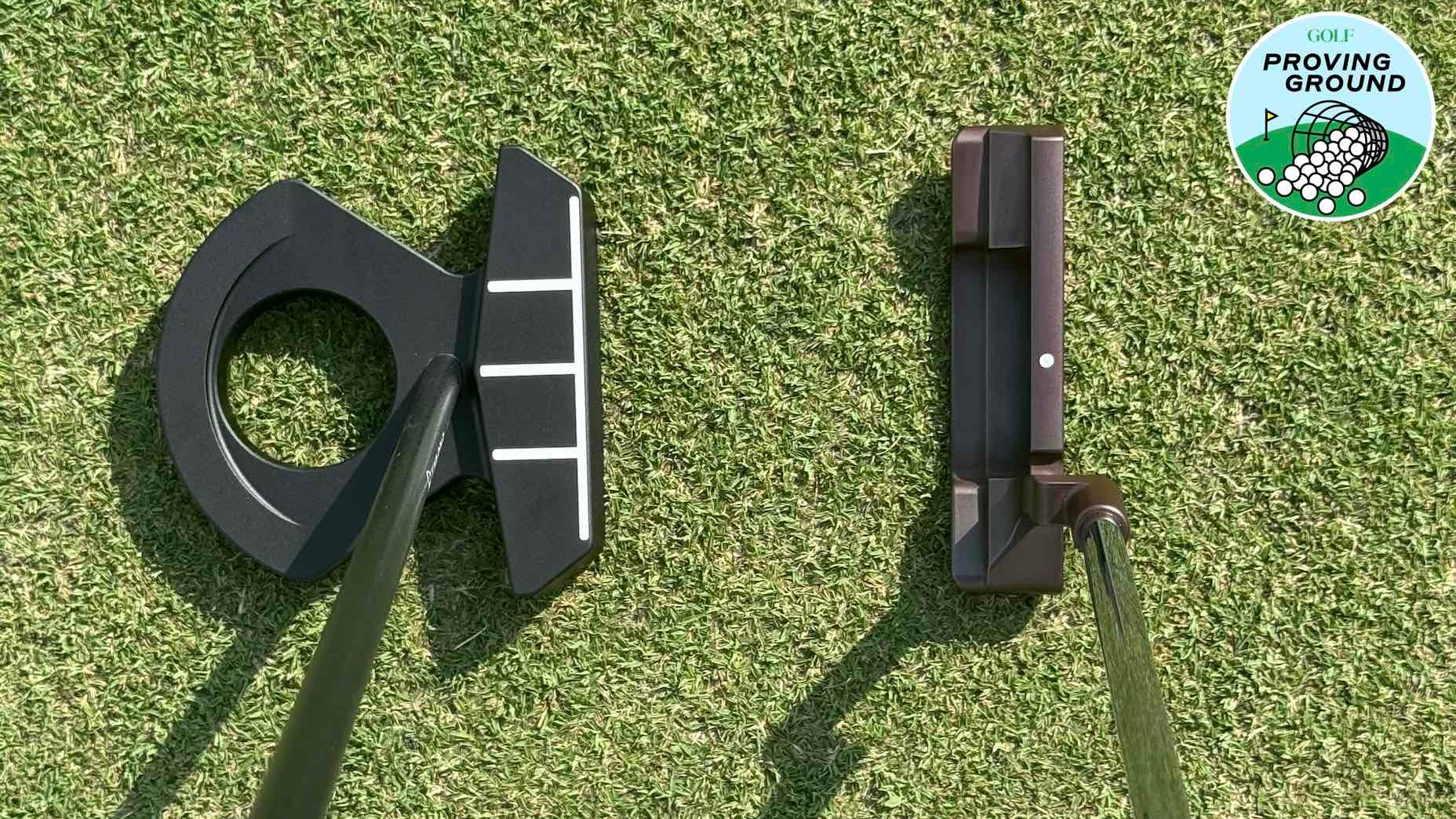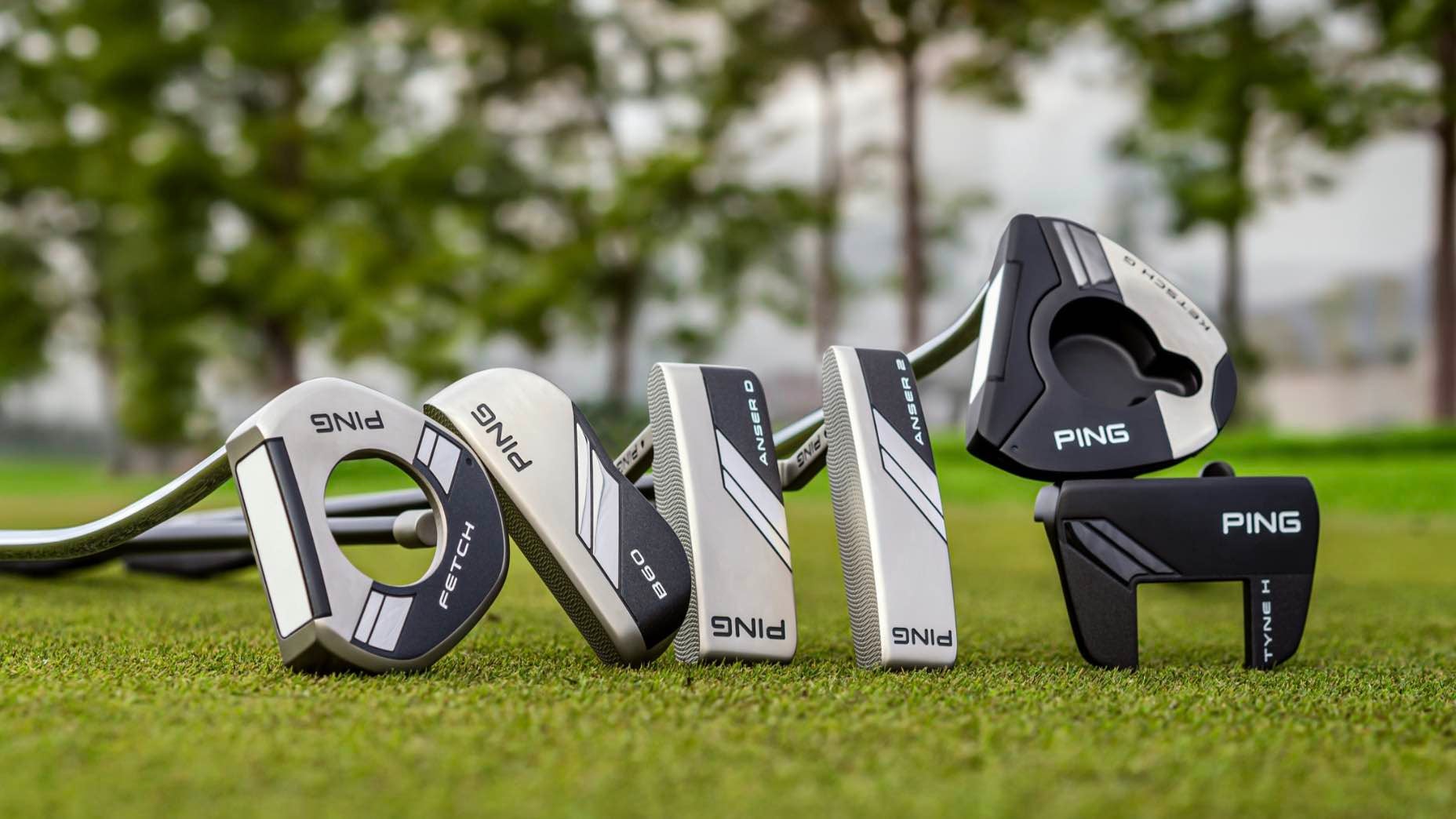With the recent success of players like Wyndham Clark, Rickie Fowler, and Keegan Bradley on the PGA Tour, the conversation around counter-balanced putters and the science behind them has heated up again with weekend golfers looking for an edge on the greens.
Now although counter-balanced putters are easy to spot thanks to their longer length and grip that extends past the top of the hands, most golfers don’t quite understand why or how this style of putter can help them, and because of that, we’re here to help.
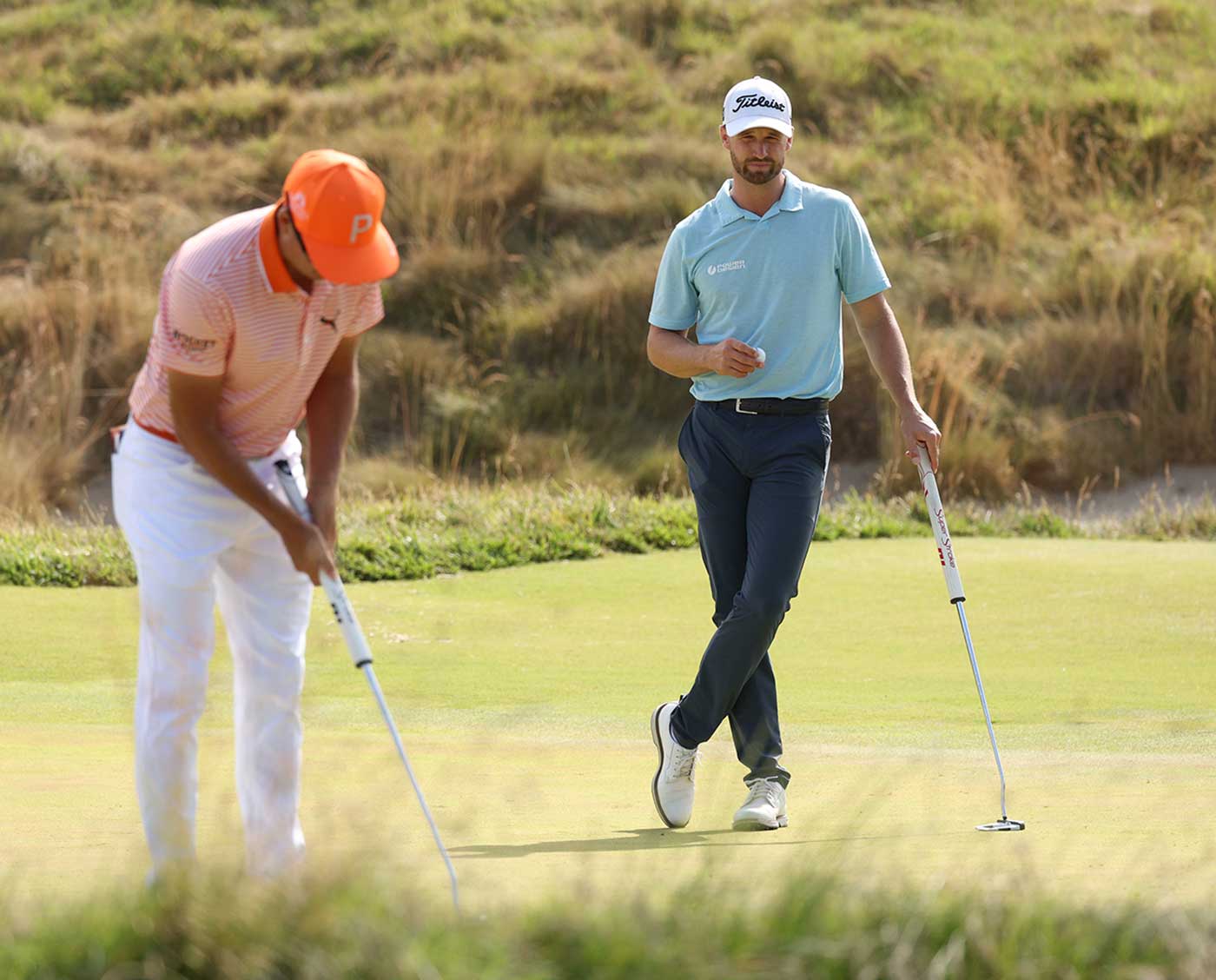
What is a counter-balanced putter?
Quite simply, it’s a putter that has a longer overall length to help create extra stability compared to a standard-length putter. This extra length, which is usually paired with a larger and heavier oversized grip helps place more mass towards the golfer’s hands to counteract a heavier putter head and assist in building a smoother putting stroke.
The reason behind this is if a putter head is too heavy compared to the rest of the putter, most golfers will struggle with distance control, and having more mass near the hands (counterbalancing) allows the head to be heavier and increases head stability while also creating more control over the head.
To take this out of the golf space and conceptualize it in a different way — imagine a broom. If you hold it at the very end of the handle and point the bristle end up and move it side to side it feels relatively hard to control. Now if you hold the bristle end of the same broom that handle is a lot easier to move because you have moved the mass of the object closer to your hands.
The mass of the broom hasn’t actually changed but how it feels because of where that mass is placed relative to you makes all the difference.
Counter Balance Putter build
Other benefits to a counter-balanced putter
As has already been mentioned, stability and MOI (measurement of forgiveness) is the main objective when using a counter-balanced putter, but thanks to the overall heavier mass there are a couple of other benefits.
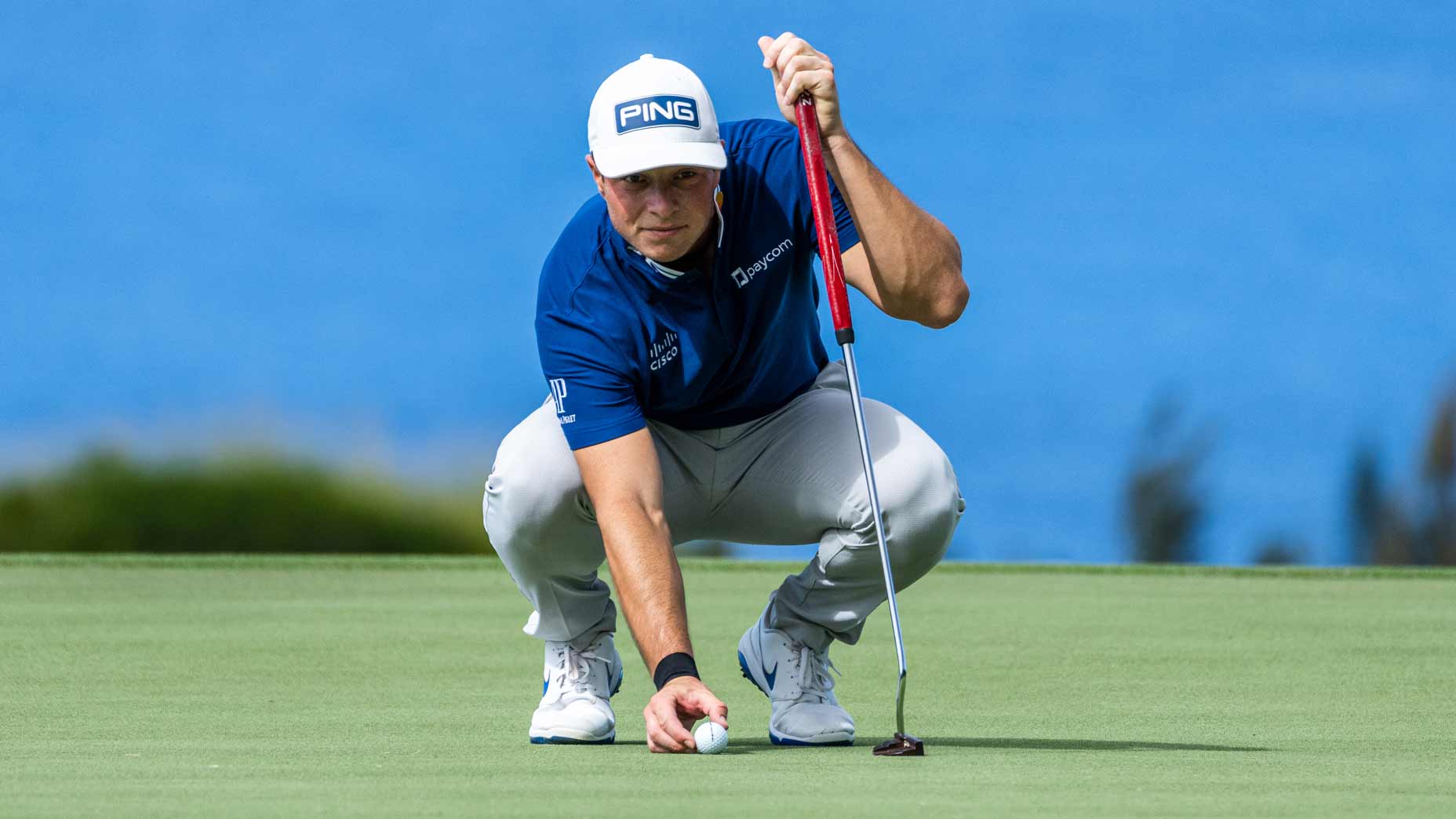
First off, the heavier mass makes it harder to move as quickly from a starting position and once the putter gains momentum on the back and through stroke, it’s less likely to move off plane, which can instantly reduce a potentially shakey stroke.
This ability to help keep the putter on plane also leads to improved distance control because of a more smooth stroke and better face contact, and it also helps with tempo.
Considering tempo is one of the biggest issues golfers struggle with, especially on shorter putts, a counter-balanced putter can really help inside 6 feet — and who wouldn’t love to make a few more short ones?
Want to overhaul your bag for 2023? Find a fitting location near you at True Spec Golf.




